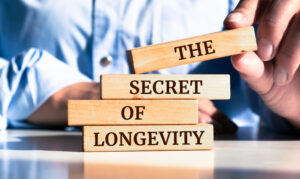
Does Exercise Support Longevity?
The way we move today shapes how our bodies age tomorrow. Research shows that exercise supports longevity by preserving strength, regulating metabolism, and improving the body’s ability to recover from stress. Regular movement strengthens the heart, maintains bone and muscle, and enhances circulation, all of which help sustain health as years pass.
Exercise also supports sharper cognition and emotional balance. Observational studies link consistent activity with increased life expectancy, ranging from roughly half a year to nearly seven years of added lifespan. The effects are tied to stronger cardiovascular systems, improved cellular repair, and lower inflammation.
This article explores how movement promotes longevity, which types of exercise offer the greatest benefit, how much activity is needed, and what occurs when movement stops.
The Science Behind Longevity and Physical Activity
Longevity depends on more than lifespan; it reflects the ability to function well and maintain independence. Research consistently shows that regular exercise improves cardiovascular efficiency, stabilizes metabolism, strengthens muscles and bones, and protects cognitive health. These benefits reduce the risk of chronic conditions that shorten life.
Defining Longevity: Beyond Years to Quality of Life
Longevity involves both how long and how well a person lives. Exercise supports this by sustaining energy, mobility, and resilience. Improved circulation and oxygen use allow organs to perform efficiently, while stronger muscles and bones reduce the risk of falls and frailty.
What the Research Shows
Large-scale studies and meta-analyses confirm that regular activity lowers all-cause mortality and extends healthspan. Both aerobic and strength training contribute to this effect, and combining them yields the greatest protection. Benefits appear even at moderate levels of movement and are consistent across age groups. Evidence also shows that frequent light activity helps counteract the risks of prolonged sitting. Findings from the National Institutes of Health and the European Journal of Preventive Cardiology confirm that realistic weekly exercise volumes correlate with longer life and improved function (NIH/PMC, EJPC, NIH/PMC).

What Types of Exercise Best Support a Longer Life
Different forms of movement affect the body in distinct ways. Combining several types of exercise produces the broadest protection for long-term health.
Aerobic Exercise: Foundation for Heart and Cellular Health
Aerobic activity strengthens the heart and lungs while improving circulation and oxygen delivery. Regular walking, swimming, or cycling reduces the risk of heart disease, stroke, and hypertension. Even short daily sessions, such as 30 minutes of brisk walking most days, lead to measurable gains in cardiovascular and metabolic health.
Strength Training: Building Longevity from Within
Resistance exercise maintains muscle mass and bone density, both of which decline naturally with age. Preserving muscle supports metabolism, mobility, and joint stability. Performing strength training two or three times per week using weights, resistance bands, or body weight helps sustain independence and reduce frailty. Strength training also enhances insulin sensitivity and helps manage blood sugar levels.
Flexibility and Balance: Essential for Lifelong Mobility
Flexibility and balance work improve coordination, posture, and joint mobility. Practices such as yoga, Pilates, or tai chi reduce stiffness and prevent falls. These activities also help manage stress and promote relaxation, supporting both mental and physical steadiness over time.
How Much Exercise Do You Really Need to Live Longer
Longevity benefits begin at surprisingly achievable levels of activity. Consistency matters more than intensity. Regular movement performed throughout the week yields greater results than sporadic bursts of exercise.
Finding the Right Balance of Effort
Too little activity weakens the body, while excessive exercise can create strain. The healthiest approach challenges the body without overtaxing it. Moderate activity, like brisk walking or steady cycling, keeps the heart strong and metabolism balanced.
Weekly Guidelines for Lifespan Gains
Global health authorities recommend at least 150 minutes of moderate activity or 75 minutes of vigorous activity per week, paired with two or more days of strength training. Research from long-term cohort studies suggests that exceeding these minimums can offer further protection, up to about 300 minutes per week, before benefits begin to level off. Even small bouts of movement accumulated throughout the day contribute meaningfully to lower mortality risk.
When Too Much Becomes Counterproductive
Extreme endurance volumes or inadequate recovery can raise stress hormones and increase fatigue. Competitive-level training performed without sufficient rest may strain the heart and immune system. Sustainable, balanced exercise paired with recovery produces the most lasting results.

Health Benefits of Exercise for Longevity
Exercise benefits the entire body, influencing nearly every major system in ways that could collectively extend life and preserve health. Its effects are both immediate and cumulative, shaping how the body functions day to day and how well it ages over time.
Cardiovascular and Metabolic Resilience
Movement strengthens the heart, expands blood vessels, and improves circulation, which keeps organs well-nourished and efficient. It lowers blood pressure, balances cholesterol, and regulates blood sugar. These changes reduce the risk of heart disease, stroke, and type 2 diabetes, all of which are leading causes of premature death. Studies consistently show that people who maintain moderate fitness levels experience lower mortality rates than those who remain inactive. Even small gains in aerobic capacity can translate into years of additional life expectancy.
Immune Support and Inflammation Control
Regular exercise improves immune defense and reduces chronic inflammation, a major driver of age-related decline. Moderate physical activity increases the circulation of white blood cells that identify and repair damage. It also helps control the release of stress hormones, keeping the immune system balanced. This steady regulation lowers the risk of illnesses that become more common with age, from infections to certain cancers.
Mental Health and Cognitive Preservation
Physical activity also supports brain health by improving blood flow to neural tissue and stimulating the release of chemicals that strengthen communication between brain cells. People who remain active show lower rates of depression, anxiety, and cognitive decline. Exercise promotes sharper memory and sustained focus, supporting independence and decision-making ability throughout life. Together, these mental and emotional benefits make it easier to stay engaged and socially connected—two strong predictors of healthy aging and longevity.
Can Regular Exercise Slow the Aging Process
Aging changes how cells produce energy, repair tissue, and respond to stress. Regular physical activity slows many of these shifts and keeps body systems efficient.
Cellular Health and Telomere Maintenance
Cells are protected by telomeres that shorten as they replicate. When they become too short, cells lose the ability to repair damage. Studies indicate that active adults tend to have longer telomeres, suggesting exercise helps preserve cellular health. The evidence is strongest for consistent aerobic activity maintained over months or years.
Mitochondrial Efficiency and Energy Longevity
Mitochondria generate energy for every function of the body. With age, they become less efficient, leading to fatigue. Exercise encourages new mitochondria to form and existing ones to function better, supporting endurance and recovery across the lifespan.
Epigenetic Adaptation and Repair Mechanisms
Physical activity influences which genes are active, promoting cellular repair and reducing processes linked to inflammation. These adaptations help tissues stay functional longer and delay many visible and internal effects of aging.
What Happens If You Stop Exercising
When movement stops, the body begins to lose the adaptations it built through training. The speed of decline depends on fitness level, age, and duration of inactivity.
Cardiovascular and Muscle Decline
Cardiorespiratory fitness can drop within two to four weeks without exercise. The heart becomes less efficient, and muscles lose tone and strength. These changes lead to fatigue and reduced physical capability.
The “Use It or Lose It” Principle
Muscles and bones respond to mechanical load. Without it, the body breaks down tissue faster than it rebuilds, leading to weakness, loss of balance, and slower metabolism. Extended inactivity increases the challenge of regaining former fitness levels.
Returning to Activity and Rebuilding Health
The benefits of exercise return as soon as movement resumes. Even small, consistent sessions can restore endurance, strength, and energy at nearly any age. The path to longevity depends less on perfection and more on steady effort over time.

Moving Toward a Longer, Healthier Life
Exercise remains one of the most effective ways to support longevity and preserve health. It strengthens the heart, protects the brain, balances metabolism, and maintains mobility. Each active choice builds resilience that medication alone cannot achieve.
Regular physical activity could slow aging, extend lifespan, and enhance quality of life. The goal is not extreme performance but sustainable movement that keeps the body strong and adaptable.
Discover more insights and stories that deepen understanding of life and legacy on the Research For Life Blog.

